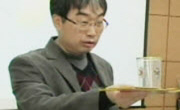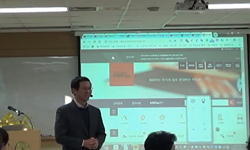정부출연연구기관은 대학 그리고 민간(기업)연구소와 더불어 현재 한국 국가연구체제의 한 축을 담당한다. 정부출연연구기관은 정부의 출연을 받지만, 그 안에서 연구의 독립성과 자율성을...
http://chineseinput.net/에서 pinyin(병음)방식으로 중국어를 변환할 수 있습니다.
변환된 중국어를 복사하여 사용하시면 됩니다.
- 中文 을 입력하시려면 zhongwen을 입력하시고 space를누르시면됩니다.
- 北京 을 입력하시려면 beijing을 입력하시고 space를 누르시면 됩니다.

출연(出捐)의 대가―‘과학기술’에서 ‘국가과학기술’로 = Price of Contribution: From Science and Technology to ‘National’ Science and Technology
한글로보기부가정보
국문 초록 (Abstract)
정부출연연구기관은 대학 그리고 민간(기업)연구소와 더불어 현재 한국 국가연구체제의 한 축을 담당한다. 정부출연연구기관은 정부의 출연을 받지만, 그 안에서 연구의 독립성과 자율성을 보장받는 한국 특유의 독특한 형태의 조직이다. 그리고 정부출연연구기관을 관리하는 연구회는 유사한 관련 조직과 제도를 운영하는 선진국의 사례를 참고삼아 정부출연연구기관을 효율적으로 운영하고, 이를 체계적으로 육성한다는 목표를 위해 1990년대 말에 등장한 관리기구이다. 흥미로운 사실은 연구회 제도가 도입된 직후부터 연구회가 제 기능을 발휘하고 있지 못하는 평가가 존재했다는 점이다. 김대중 정부를 포함하여 이후에 출범한 여러 정권들은 매번 새로운 정책을 통해 연구회와 정부출연연구기관을 개혁하고자 했다. 특히 이 기간 동안 과학기술분야 연구회와 인문사회분야 연구회는 서로 다른 길을 걸었다. 과학기술을 통한 국가발전을 견인하기 위해, 정부는 과학기술 정책을 주도하고, 과학기술분야 연구회를 통해서 정부출연연구기관을 강하게 ‘관리’하고자 했다. 반면 인문사회분야의 연구회의 경우, 정부는 차원의 국정과제를 뒷받침하기 위한 ‘국정연구’와 국가 전반의 종합적인 ‘국가전략’ 사이에서 갈팡질팡하는 모습을 보였다. 이 글은 이와 같은 ‘분기’(分岐)의 역사적 기점으로 과학기술분야 연구회가 과학기술부 산하로 복귀한 시기에 주목한다. 이 시기에 결정된 역사적 경로는 과학기술분야 연구회를 중심으로 한 국가연구체제의 근간을 형성한다.
다국어 초록 (Multilingual Abstract)
Along with universities and private(corporate) laboratories, government-funded research institutes are a pillar of the national research system. They are funded by the government, but have a unique form of research independence and autonomy. Research ...
Along with universities and private(corporate) laboratories, government-funded research institutes are a pillar of the national research system. They are funded by the government, but have a unique form of research independence and autonomy. Research councils are governing bodies that emerged in the late 1990s to manage and foster the efficient operation of government-funded research institutes, and they have been in existence for almost 25 years. It is interesting to note that since the introduction of the research council system, there has been an assessment that the research councils are not functioning as they should, and each government since Kim Dae-jung’s government, which introduced the research council system, has sought to reform the research councils and government-funded research institutes through new policies. During this period, research institutes in the field of science and technology and research institutes in the field of humanities, and social science took different paths. In order to drive national development through science and technology, the government sought to lead science and technology policy and strongly manage government-funded research institutes through the science and technology research councils. In the case of science and technology research councils, the government was torn between “national research” to support national tasks and comprehensive national strategies for the country as a whole. This article examines the characteristics of the Korean national research system, focusing on the history of research councils in the field of science and technology, with a particular attention to 2004 as the historical origin of this division.
동일학술지(권/호) 다른 논문
-
‘죽염’의 등장과 수용―1980~90년대 한국 사회의 변화와 건강기능식품 시장의 형성
- 역사문제연구소
- 김태호
- 2024
- KCI등재
-
지원하되 간섭하기―1999~2009년 국가연구체제의 형성과 구조 개혁
- 역사문제연구소
- 김성은
- 2024
- KCI등재
-
- 역사문제연구소
- 윤충로
- 2024
- KCI등재
-
공(公)의 부재, 관(官)의 그늘―한국 국가연구체제의 원점
- 역사문제연구소
- 김인수
- 2024
- KCI등재




 DBpia
DBpia





